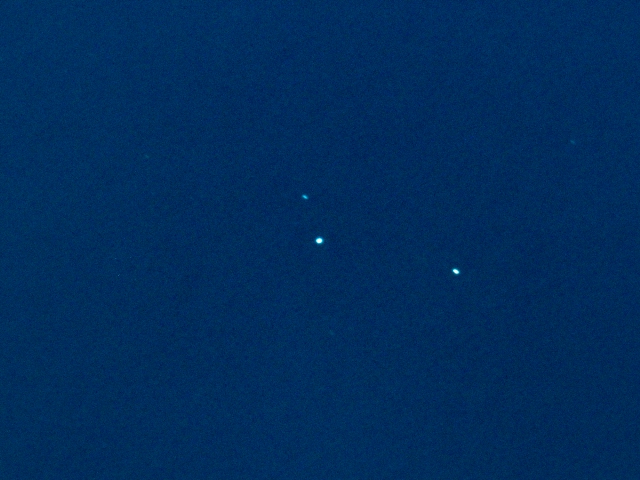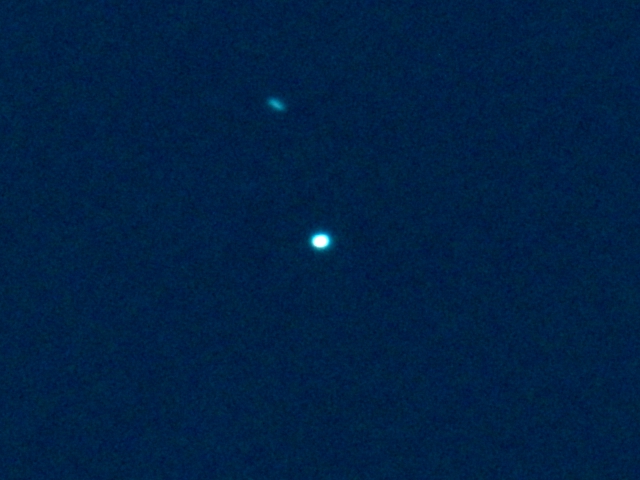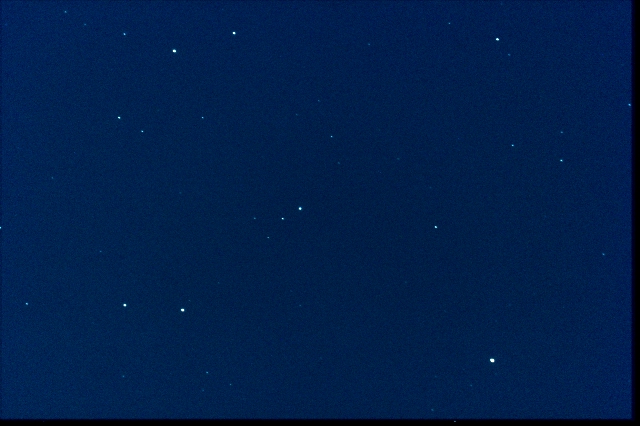


(10)Hygiea<小惑星10番ヒギエア>(2018)
2018/10/21T20:42:10〜21:04:19までの30秒間露光20枚を合成(+10秒)
露光時間:30秒*20=10分 ISO3200 長時間ノイズリダクションをオン
Mewlon210/2050FR + LPS-P2 + 60D / EM200Temma2
ステライメージ6.5で平均加算合成、レベル補正とリサイズ
|
* 小惑星10番ヒギエア *
Hygiea (minor planet designation: 10 Hygiea) is the fourth-largest asteroid in the Solar System by volume and mass, and it is located in the asteroid belt. With somewhat oblong diameters of 350?500 kilometres (220?310 mi) and a mass estimated to be 2.9% of the total mass of the belt,[7] it is the largest of the class of dark C-type asteroids with a carbonaceous surface. Despite its size, Hygiea appears very dim when observed from Earth. This is due to its dark surface and farther-than-average distance from the Sun. For this reason, six smaller asteroids were observed before Annibale de Gasparis discovered Hygiea on 12 April 1849. At most oppositions, Hygiea has a magnitude that is four magnitudes dimmer than Vesta's, and observing it typically requires at least a 100-millimetre (4 in) telescope. However, while at a perihelic opposition, it can often be observed just with 10x50 binoculars. On 12 April 1849, in Naples, Italy, astronomer Annibale de Gasparis (age 29) discovered Hygiea.[8] It was the first of his nine asteroid discoveries. The director of the Naples observatory, Ernesto Capocci, named the asteroid. He chose to call it Igea Borbonica ("Bourbon Hygieia") in honor of the ruling family of the Kingdom of the Two Sicilies where Naples was located.[9] In 1852, John Russell Hind wrote that "it is universally termed Hygiea, the unnecessary appendage 'Borbonica' being dropped"[9] (as well as the final "ia" in favor of just "a"). The name comes from Hygieia, the Greek goddess of health, daughter of Asclepius (Aesculapius for the Romans).[10] The name was occasionally misspelled Hygeia in the 19th century, for example in the Monthly Notices of the Royal Astronomical Society.[11] |
2018年10月21日10.8等





